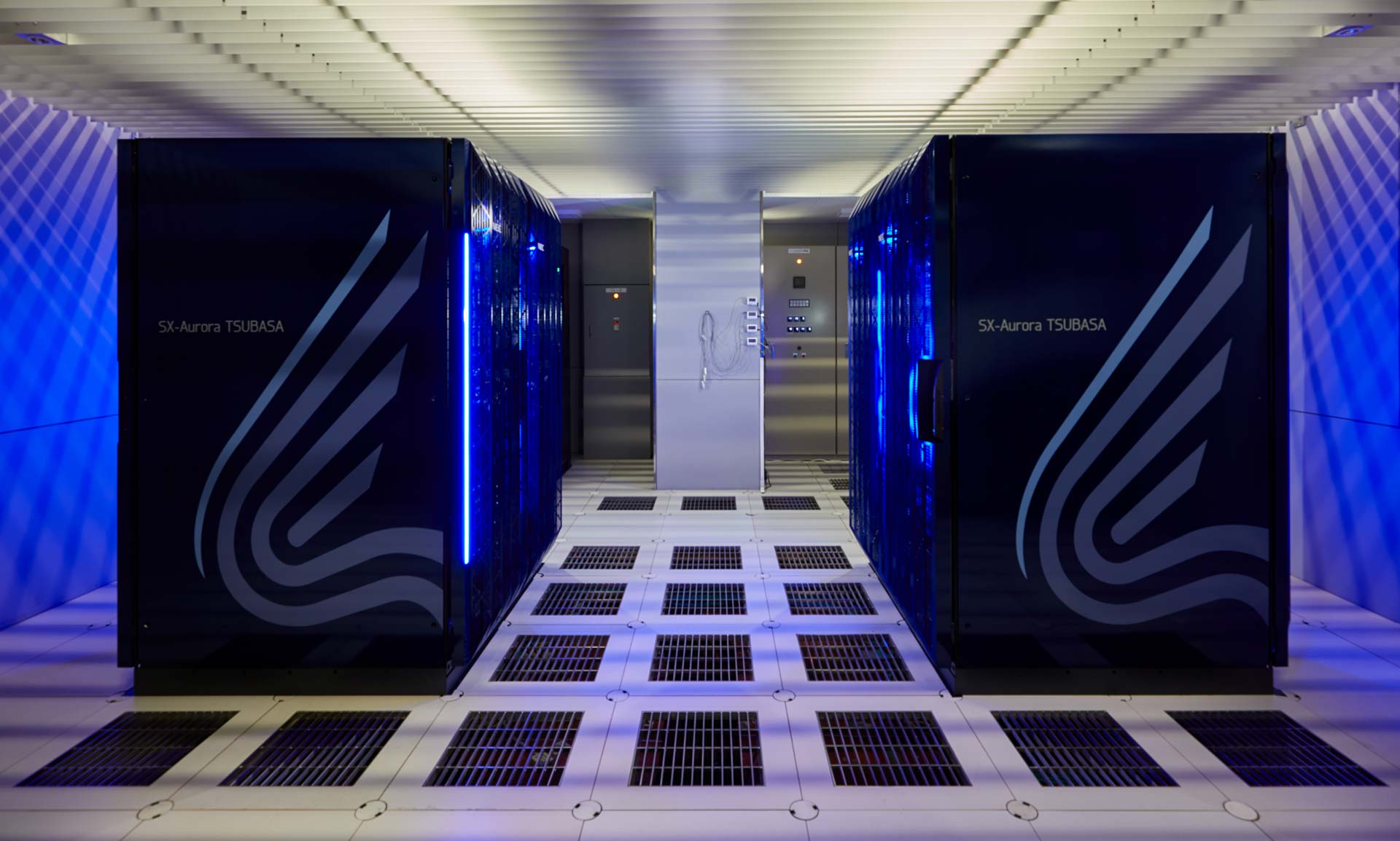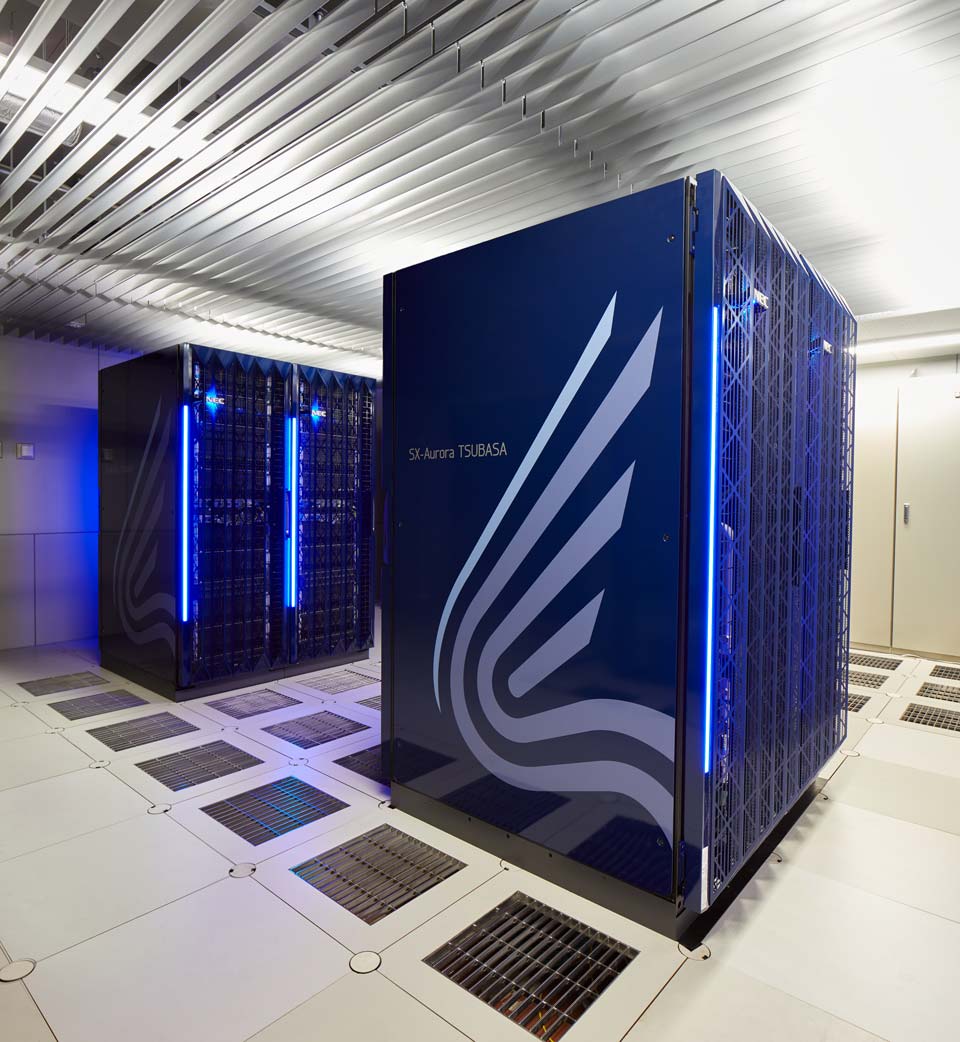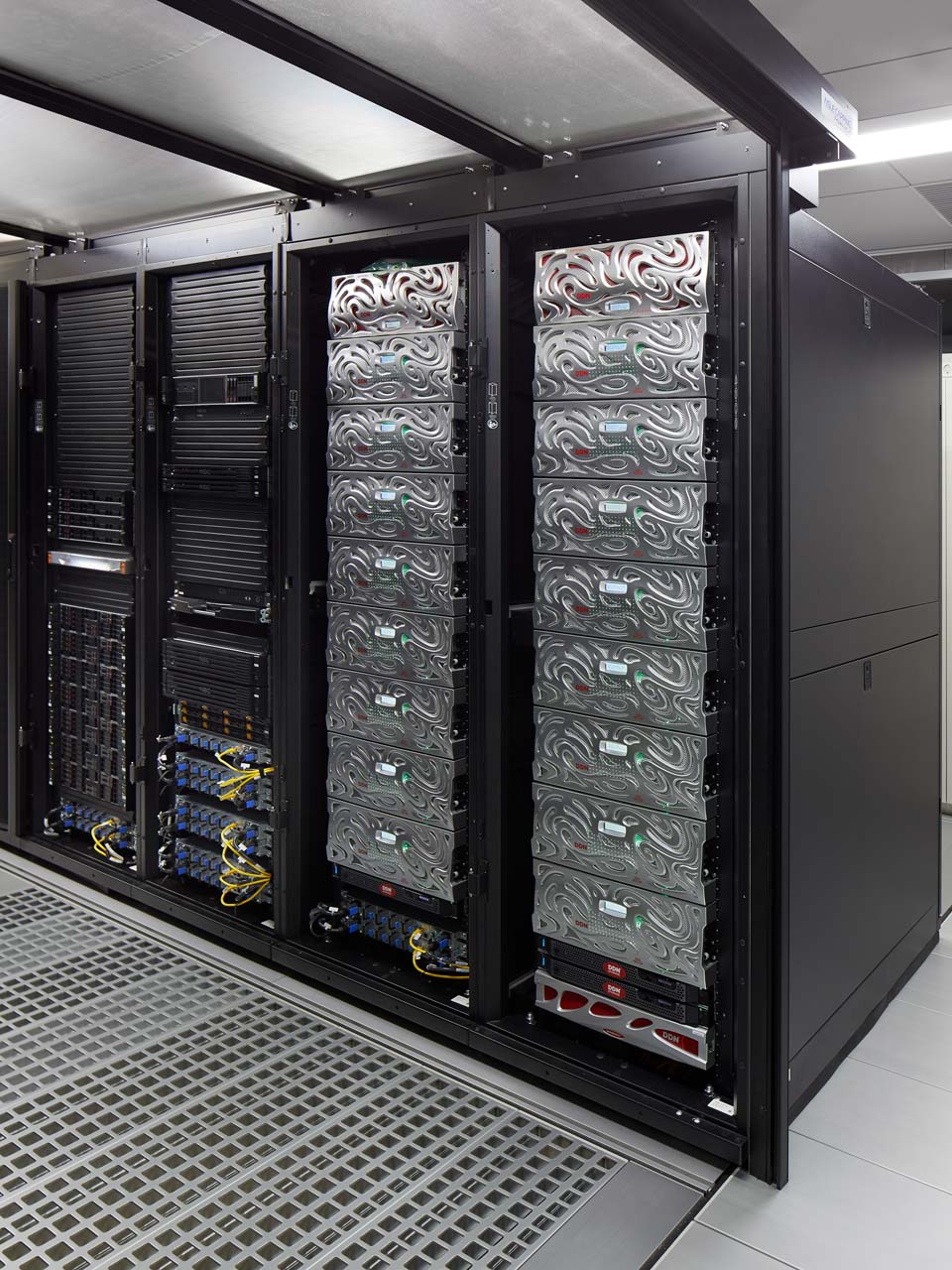

Changes in the environment caused by human activities may lead to exceeding the Earth's resilience capability, resulting in irreversible climatic and environmental changes. To prevent this to happen, it is necessary to make future projections and to take appropriate countermeasures.
The Earth system that surrounds us, including the atmosphere, oceans, and rivers, is based on complex physical, chemical, and biological processes. We need to reproduce a virtual earth environment using computers incorporating the latest knowledge of these various processes, examine climatic and environmental changes, and make detailed temporal and spatial projections.
In order to support research on global environmental model calculations, the Center for Global Environmental Research (CGER) in cooperation with the Environmental Information Department at NIES has established a supercomputer system and offers it to researchers both within and outside NIES.
Specification of the Supercomputer
The supercomputer (vector processor) was installed to elucidate and project phenomena related to global environmental change. The first supercomputer was introduced in fiscal year 1991 and it was updated to its seventh version in March 2020.
The core of the current supercomputer system is an ultra-high-speed 256VE (Vector Engine) vector processor (NEC SX-Aurora TSUBASA A511-64, peak performance: 622.8 TFLOPS). The vector processor has an ultra-high-speed vector calculator and a large-capacity memory necessary for large-scale calculations such as global environmental simulations. In addition, a scalar processor (HPE Apollo2000, peak performance: 86.0 TFLOPS) and a large-capacity file system with an effective capacity of 22 PB have been introduced to meet various calculation needs and the need for storing a huge amount of calculation data. These systems are available via an internal network connecting the various research centers.

SX-Aurora TSUBASA (Vector processing computer)

Apollo 2000 (Scalar processing computer) and Parallel Storage
| Number of Nodes | 256 VE nodes |
|---|---|
| Total Number of CPU Cores | 2048 |
| Peak Vector Performance | 622.8 TFLOPS (622.8 trillion floating point calculations per second)
(2048 CPU cores × 304 GFLOPS) |
| Central Memory Capacity | 12 TB |
| Internode Crossbar Switch (IXS) Transfer Rate (GB/s) | 12.5 GB/s × 2 (bidirection) |
| OS | CentOS 7 |
| Compiler | NEC SDK for VE |
| Libraries | NetCDF,GFD Cyber Library (DCL), etc. |
| Tools | GTOOL, GrADS, etc. |
Implementation research
The supercomputer implementation research themes are selected after consideration by the “Supercomputer Usage Committee”, which is composed of experts from within and outside of NIES. The research results are published in the NIES Supercomputer Annual Report and Monograph Report in order to introduce a broad range of global environmental research using the Supercomputer system and to facilitate information exchange among users.
ANNUAL REPORT
| 2018 | PDF, 8.1 MB |
|---|---|
| 2017 | PDF, 9.8 MB |
| 2016 | PDF, 7.5 MB |
| 2015 | PDF, 9.3 MB |
| 2014 | PDF, 12.5 MB |
| 2013 | PDF, 11.5 MB |
| 2012 | PDF, 9.7 MB |
| 2011 | PDF, 9.6 MB |
| 2010 | PDF, 10.9 MB |
| 2009 | PDF, 19.0 MB |
| 2008 | PDF, 10.3 MB |
| 2007 | PDF, 7.9 MB |
| 2006 | PDF, 5.6 MB |
| Vol.14 (2005) | PDF, 7.8 MB |
|---|---|
| Vol.13 (2004) | PDF, 27.9 MB |
| Vol.12 (2003) | PDF, 9.6 MB |
| Vol.11 (2002) | PDF, 5.6 MB |
| Vol.10 (2001) | ZIP, 21.9 MB |
| Vol.9 (2000) | ZIP, 6.1 MB |
| Vol.8 (1999) | ZIP, 6.8 MB |
| Vol.7 (1998) | ZIP, 7.0 MB |
| Vol.6 (1997) | ZIP, 4.1 MB |
| Vol.5 (1996) | ZIP, 3.2 MB |
| Vol.4 | ZIP, 2.2 MB |
| Vol.3 | ZIP, 2.3 MB |
| Vol.2 | ZIP, 2.8 MB |
| Vol.1 | ZIP, 4.5 MB |
MONOGRAPH REPORT
Research Programs and Representatives in FY 2019
- Climate change studies by development of global-scale terrestrial models
- Tokuta YOKOHATA (NIES)
- Studies on dependencies of climate sensitivity to different external factors
- Hideo SHIOGAMA (NIES)
- A development of ocean coupled chemistry-climate model based on MIROC5
- Hideharu AKIYOSHI (NIES)
- Impact assessment of air pollutants on environment and climate
- Daisuke GOTO (NIES)
- A long term prediction model for coastal ocean environment involving suspendable particle behavior and its interaction with pollutant substances
- Hironori HIGASHI (NIES)
- Construction of GOSAT-2 model system for global carbon cycle
- Makoto SAITO (NIES)
- The reference data production for the reprocessing at the GOSAT DHF
- Akihide KAMEI (NIES)
- Numerical study on cloud systems using NICAM
- Masaki SATOH (The University of Tokyo)
- Development of air pollution forecasting system by using aerosol data assimilation
- Daisuke GOTO (NIES)
- A Numerical experiment on varieties of climates of terrestrial planets with taking exoplanets into consideration: an examination on habitability of land planets
- Masaki ISHIWATARI (Hokkaido University)
- Studies of the effect of seasonal change on the equatorial quasi-biennial oscillation
- Kiyotaka SHIBATA (Kouchi University of Technology)
- A development of continent-to-urban scale air quality prediction system and studies on aerosol-cloud interactions
- Hisashi YASHIRO (Riken→NIES)
Example of research results
The supercomputer system is used for research on global environmental phenomena and problem. The system is utilized in order to reproduce and project complex natural phenomena in the atmosphere and ocean by long-term simulations covering the whole world, and to accumulate, process and analyze information on the environment and living organisms from the past to the present.
We have carried out numerical simulations on how the earth’ surface temperature changes in the future caused by global warming, based on the individual emission scenarios estimated by the Intergovernmental Panel on Climate Change (IPCC). We have also carried out other important simulations and future projections in a wide range of fields such as the behavior of radioactive emissions into the sea caused by the accident at Fukushima Daiichi Nuclear Power Plant.

 Fig. 1. Change in Surface Air Temperature using MIROC5 climate model. RCP8.5 case (BAU), RCP2.6 (less than 2°C degree temperature increase)
Fig. 1. Change in Surface Air Temperature using MIROC5 climate model. RCP8.5 case (BAU), RCP2.6 (less than 2°C degree temperature increase)
 Fig. 2. Concentration of Cesium-137 in the Ocean Surface Layer (Bq/L) [left], Concentration of Cesium-137 on the Ocean Bottom (Bq/kg) [right]
Fig. 2. Concentration of Cesium-137 in the Ocean Surface Layer (Bq/L) [left], Concentration of Cesium-137 on the Ocean Bottom (Bq/kg) [right]


